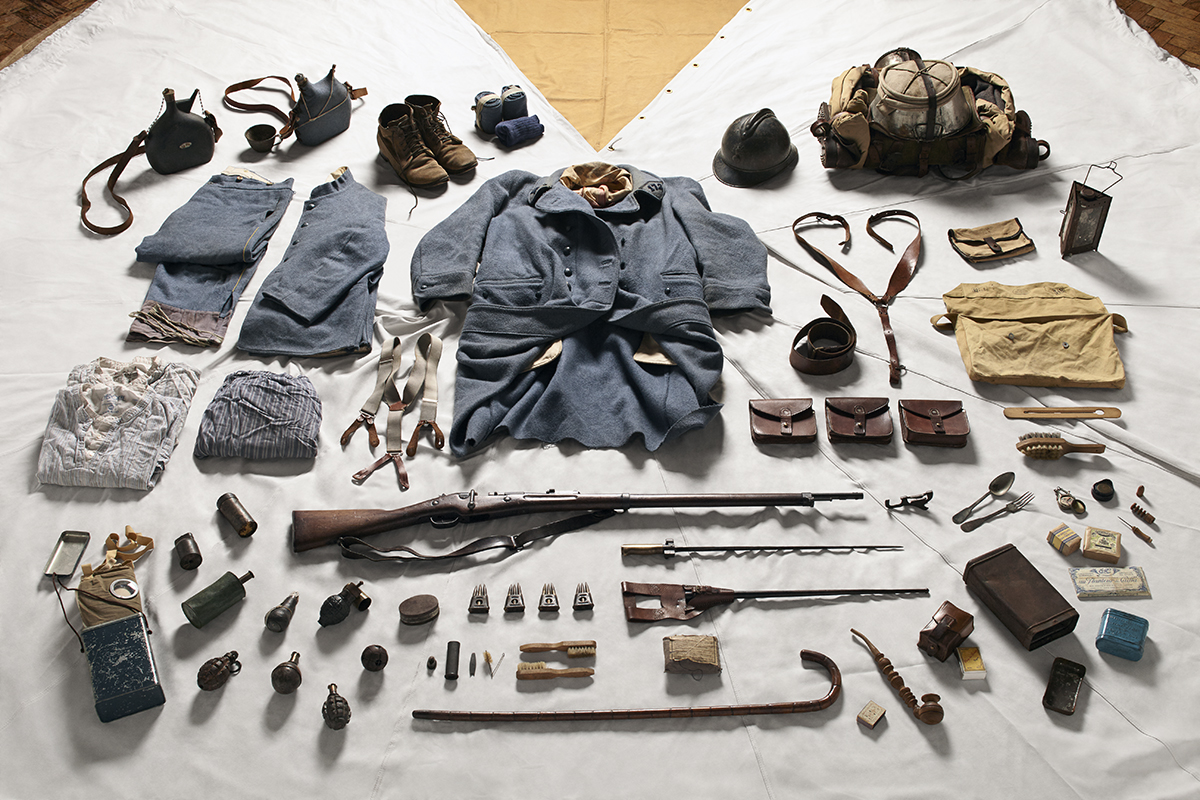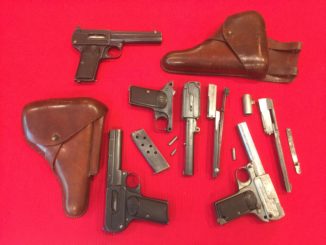Today I am visiting Simpson Ltd in Galesburg, Illinois – a gun shop, import/export shop, and premier Luger dealer. The question we are look at is one of the most common they hear from customers: how do you tell if a Luger is all matching? When the guns were originally made, the factory put the serial number on a whole bunch of different parts, and on many guns some of these parts have been replaced over the years. A gun that retains all of its original matching parts brings a substantial increase in value.
We are going to look at a standard WWII German Army Luger, which is the most common type in the US today, and show you where each of the number is on the outside and the inside. There are many other types of Lugers with somewhat different numbering patterns, but this will hopefully be a good primer for you!




Having matching parts on the Luger also ensures that it runs well. I recall that the hand-finished parts were never meant to be changed between guns.
Ad replacing parts: German manual
H.Dv.181/5 Untersuchung und Instandsetzung des Infanteriegeräts. Teil 5. Untersuchung und Instandsetzung der Pistole 08
available here: https://app.box.com/s/ht5k9edgbkemalze21yy4lmbkvi3wu1h
says what to change when particular fail happens.
Where the heck did you find it. Are you an intelligence officer? 🙂
No interchangeable parts, not that time. Later production guns were made for large part interchangeable. Afaik, the GP35 was made that way.
In either case, there is price to be paid; either you pay for selective fit or for tight tolerances. Nowadays, I doubt there is a selective fit handgun bar specials. You would never be able to offer a gun for 5 hundred.
Having said that, it is possible that Colt 1911 was made interchangeable. Have not see drawings though.
Yes, the 1911 was designed for full parts interchangeability from the beginning. Which was typical of Browning’s designs.
The reason it can be completely disassembled with no tools (the grip screws can be removed with the front lip of the magazine floorplate) is to allow armorers to make repairs in the field by simple parts replacement. take it apart, replace what’s broken, put it back together again.
Of course, there’s also the fact that the parts in the 1911 rarely break.
😉
cheers
eon
“Yes, the 1911 was designed for full parts interchangeability from the beginning. Which was typical of Browning’s designs.”
Wait, IIRC M1911 (I understand under that only “true” 1911, not 1911A1) was made by various manufacturers, so I was wondering how they managed to do so, I found that site: http://coolgunsite.com/collectors_guide.htm
which say it was not so:
Other than marking, the pistol made at Springfield had few obvious differences with the Colts made pistol. However not only were there many subtle difference in the parts, but many of the parts will not completely interchange between a Springfield and a Colts made pistol. It was not until WWII that proper tolerances were specified for all parts to function and interchange.
and also
The Remington 1911s where good quality guns although they did not interchange parts well with guns of other manufacture.
Wait Denny wrote Colt 1911
so as Springfield is not Colt and Remington is not Colt, my comment make no sense, it is my fail.
@Daweo
I said Colt because afaik they were the original and largest producer of 1911. By today’s standards, if I should use same measure, it could be anyone; Wilson Combat, Springfield, Kimber or anyone.
“Yes, the 1911 was designed for full parts interchangeability from the beginning.”
“Drop-in” interchangeability was a novel concept for a manufacturer, and virtually unheard of between different companies.
When making parts for an in-house product, it would be common to correct a goof in one part by modifying the mating part, depending on which would be cheaper to do. WW2 war material production really hammered on the principal of interchangeability between manufacturers, but it wasn’t until CNC machining came about that it became more realistic. Military production and automobile parts suppliers have been the major influences on this situation.
Historically, even in-house parts, if made in different facilities, tended to be a nightmare for manufacturers. Mostly that was due to manual machining processes. Getting people to understand that the blueprint specifications are not to be considered “suggested, or ballpark” dimensions is just part of the problem.
Great video. Very informative.
Daweo,
thanks a lot for sharing the link.
Additional manuals from some series:
H.Dv.181/1 Untersuchung und Insandsetzung des Infanteriegeräts. Teil 1. Allgemeine Bestimmungen
https://app.box.com/s/9iizbok9enbubrfqvm51wisqbqica1fn
In English it would be roughly “general remarks”.
H.Dv.181/3 Untersuchung und Instandsetzung des Infanteriegeräts. Teil 3. Untersuchen der Läufe der Handfeuerwaffen und der Maschinengewehre
https://app.box.com/s/ynjhdo6m9ki4zt8gaadkvcgo5qbt8upx
which is barrels of handguns and machine guns
I hope your more fluent in deciphering Alte Schwabacher (or how that particular font should be named) than me.
Very nice overview of a subject not out there in this format and easily accessed.
First impression: Holy. Freakin’. Lugers.